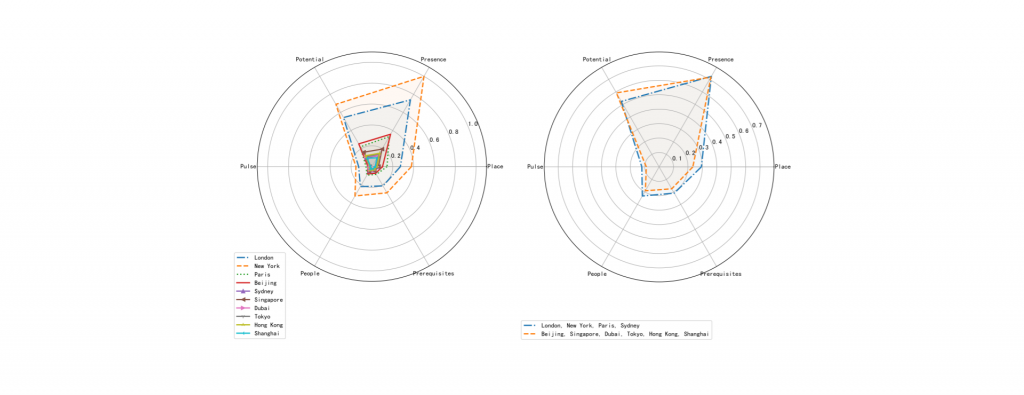This paper uses the GKG to examine how large cities are framed in the global media:
Global cities act as influential hubs in the networked world. Their city brands, which are projected by the global news media, are becoming sustainable resources in various global competitions and cooperations. This study adopts the research paradigm of computational social science to assess and compare the city brand attention, positivity, and influence of ten Globalization and World Cities Research Network (GaWC) Alpha+ global cities, along with their dimensional structures, based on combining the cognitive and affective theoretical perspectives on the frameworks of the Anholt global city brand dimension system, the big data of global news knowledge graph in Google’s Global Database of Events, Language, and Tone (GDELT), and the technologies of word-embedding semantic mining and clustering analysis. The empirical results show that the overall values and dimensional structures of city brand influence of global cities form distinct levels and clusters, respectively. Although global cities share a common structural characteristic of city brand influence of the dimensions of presence and potential being most prominent, Western and Eastern global cities differentiate in the clustering of dimensional structures of city brand attention, positivity, and influence. City brand attention is more important than city brand positivity in improving the city brand influence of global cities. The preferences of the global news media over global city brands fits the nature of global cities.
